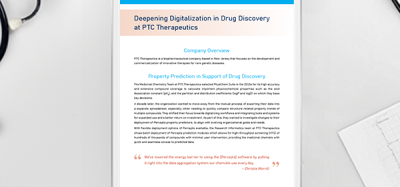Shimadzu Corporation collaborates with PREMIER Biosoft to launch a comprehensive lipid and glycan analysis platform using Shimadzu’s new Q-TOF Mass Spectrometer
Posted: 20 June 2018 | Shimadzu | No comments yet
Redefines Lipidomics and Glycomics Research with Shimadzu’s LCMS-9030 Q-TOF Mass Spectrometer…
Shimadzu, one of the world’s fastest growing mass spectrometry companies, and PREMIER Biosoft, a global leader in offering bioinformatics solutions to life sciences laboratories, today announced the introduction of Shimadzu’s LCMS-9030 Quadrupole Time of Flight (Q-TOF) mass spectrometry (MS) system with informatics support powered by PREMIER Biosoft’s software solutions for lipidomics and glycomics data analysis. Shimadzu and PREMIER Biosoft said they will support the combination of each other’s technologies to advance lipidomics and glycomics research.
Shimadzu’s high-resolution accurate-mass quadrupole time-of-flight LCMS-9030 used in conjunction with PREMIER Biosoft’s SimLipid and SimGlycan software solutions will allow scientists to perform rapid identification and quantitation of lipids and glycans from complex biological mixtures in high-throughput mode, the firms said. The joint workflows will alleviate the challenges that scientists have been facing in the fields of lipidomics and glycomics.
“The advancement in mass spectrometry technology fuels the development of lipidomics and glycomics methods,”
said Ichiro Hirano, LCMS Product Manager, Shimadzu Corporation.
“Shimadzu’s new Q-TOF technology offers a high level of sensitivity, selectivity and precision, thereby enabling researchers to develop shotgun- and LC-MS workflows for targeted and untargeted lipidomics and glycomics using the advanced lipid and glycan identification and quantitation capabilities provided by PREMIER Biosoft’s SimLipid and SimGlycan software solutions.”
Arun Apte, CEO at PREMIER Biosoft, added,
“Our software products directly read raw data from Shimadzu’s LCMS-9030 instrument, providing seamless data integration, accurate and efficient identification of lipids and glycans, their subsequent quantitation, and finally enabling downstream statistical and pathways analysis.”
Related topics
Analytical techniques, Biopharmaceuticals, Lab Equipment, Liquid Chromatography - Mass Spectrometry (LC-MS), Mass Spectrometry, Technology









